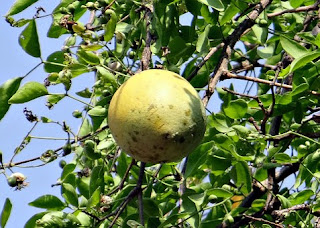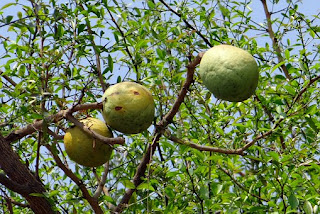Maja (Aegle marmelos (L.) Correa, citrus or Rutaceae) is a tree-shaped plant
that is hard-hungry but easily decayed and comes from tropical and sub-tropical
Asia. This plant is usually cultivated in the yard without care and harvested
fruit.
Maja is still closely related to kawista. In Bali is known as when. In Java, maja are often exchanged with berenuk, although both are of a different kind.
Maja is still closely related to kawista. In Bali is known as when. In Java, maja are often exchanged with berenuk, although both are of a different kind.
This plant is
able to grow in harsh environmental conditions, such as extreme temperatures;
eg from 49 ° C in the dry season too -7 ° C in winter in Punjab (India), at
altitudes reaching + 1.200m.
In Southeast Asia, maja can only flower and bear good fruit if there is a subtle dry season, and is unusual in elevations above 500 m. Maja is able to adapt in swampy land, on dry soil, and tolerant of slightly alkaline soils (saline).
In Southeast Asia, maja can only flower and bear good fruit if there is a subtle dry season, and is unusual in elevations above 500 m. Maja is able to adapt in swampy land, on dry soil, and tolerant of slightly alkaline soils (saline).
The outer skin
the colour of maja fruit is green but the contents are yellow or orange. The smell
of the fruit is fragrant and the liquid is sweet, contrary to the assumption
that the taste of maja fruit is bitter. Like oranges, the fruit can be
processed into sherbet, jam, syrup, or nectar. Her skin is made of marmalade.










0 Comments:
Post a Comment